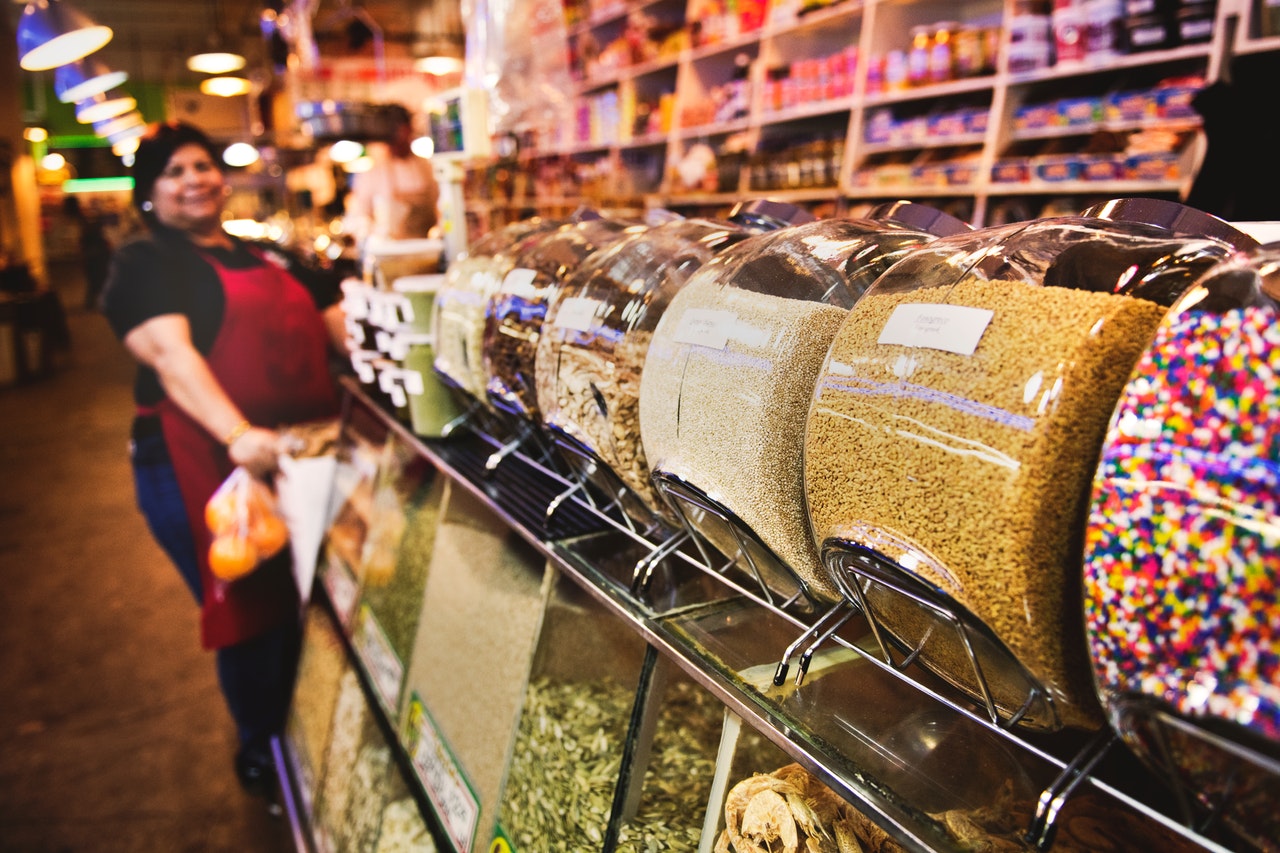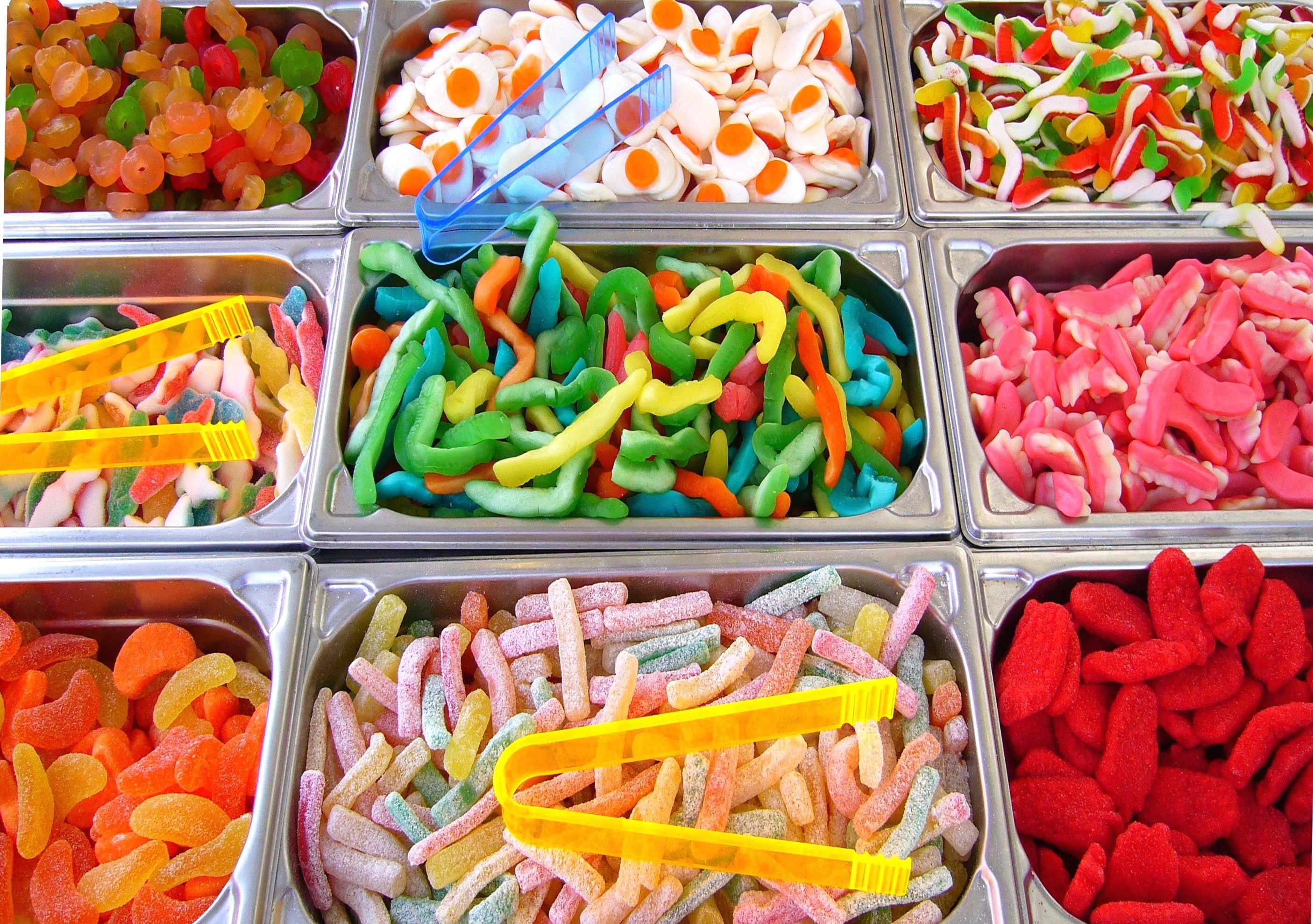The National Confectioners Association has named June as National Candy Month. Kids everywhere might rejoice, but their parents will likely lament the potential dental bills. While it’s true that eating a lot of candy can be bad for your teeth, is it really that big of a concern? Does eating candy really lead to cavities? The truth is, you don’t have to give up candy altogether: You just need to be smart about sweets and dental health.
Does Candy Cause Cavities?
Sugar is of course what makes candy so yummy. But sugar itself doesn’t cause cavities. Plaque, a sticky substance that builds up on the teeth, is what actually eats away at tooth enamel. Plaque is formed by acids produced by bacteria when they combine with saliva. These bacteria feed on carbohydrates, which are in many foods, the most notable of which is sugar. Bacteria love sugar. So, the more candy and sugary foods eaten, the more fuel for the bacteria. More bacteria means more acid and therefore more cavity-causing plaque.
Plaque can be cleaned off of teeth through regular brushing and flossing, as well as professional teeth cleaning at the dentist. Tooth decay happens when plaque is allowed to stay and grow on the teeth. With proper oral hygiene, most people can enjoy any food or drink—even candy—with little concern.

Don’t Blame it All on Candy
Candy’s high sugar content results in a lot of carbohydrates for bacteria to digest, but so do other foods. Obviously, other sweet treats like cakes and cookies have the same effect. But even the natural sugars and acids in fruits and fruit juices can pose a problem too.
There are also things that may not taste sweet that can lead to plaque. Any foods that are high in carbohydrates—bread, pasta, potatoes—provide a feast for bacteria. Even sugar-free carbonated drinks can be harmful, not because of sugar, but because of the acids they contain.
So, in candy’s defense, there are other things that can be just as responsible for creating cavities. Being aware of what we’re consuming, and following it up with proper dental care, is as important as staying away from sweets.
All Candy is Not Created Equal
As we promised a few paragraphs ago, you don’t have to give up candy cold turkey. Some candies are better than others for your teeth. Here are some guidelines:
- Believe it or not, chocolate is one of the best choices because it doesn’t stick to teeth like other candy. Milk chocolate has more sugar than dark chocolate, so dark is a better option. Some studies even go so far as to say that dark chocolate may actually help harden tooth enamel and fight plaque with an antibacterial compound found in cocoa beans.
- Stay away from gooey candies like gummies and caramels. These can stick to and between teeth. The longer things stay on teeth, the more likely they are to feed bacteria and promote plaque.
- Likewise, hard candies and lollipops—or even non-candy things like breath mints or cough lozenges—stay in the mouth longer, giving sugars more time to attach to the teeth. If you bite down on hard candy, there is the added danger of chipping or cracking teeth.
- Sour candies are just as bad as super sweet choices. There is a lot of acidity in sour flavors.
- Sugar-free gum can actually be a good option. Chewing gum promotes the production of saliva, which flushes food particles from the tooth’s surface. Xylitol is a sugarless sweetener that is becoming popular in candy and gum. Some studies even indicate that xylitol may help fight cavities, although the research is in its early stages.

Other Ways to Be Smart About Sweets
If you do have a sweet tooth, there are actions you can take to reduce your chances of tooth decay.
- Eat sweets along with a meal. The saliva produced while eating will help counteract the effects of decay-causing bacteria. Enjoying candy between meals will not have the same benefit.
- Drink plenty of water, and even swish it around in your mouth after eating candy. Saliva helps prevent bacterial growth, and conversely, dry mouth can create a good environment for it to grow. Water not only rinses off teeth but will keep your mouth hydrated too.
- Brush your teeth after sweets. Nothing can reduce the buildup of plaque like a thorough brushing and flossing. However, don’t be too quick to reach for the toothpaste. As we’ve already noted, saliva plays an important role in cleaning the mouth naturally. Give it a chance to start the cleaning process for you and wait about 30 minutes after eating. Then brush away!
Don’t Forget the Dentist
In addition to watching what you eat and practicing good oral hygiene, don’t forget to schedule regular dental exams. A dentist, through examining your teeth and taking x-rays, is the best way to detect and treat cavities if they do appear. If you don’t have a dentist, use our online tool to find one near you.
So go ahead—celebrate National Candy Month! Sugar doesn’t have to be harmful, and let’s face it—it’s delicious!


